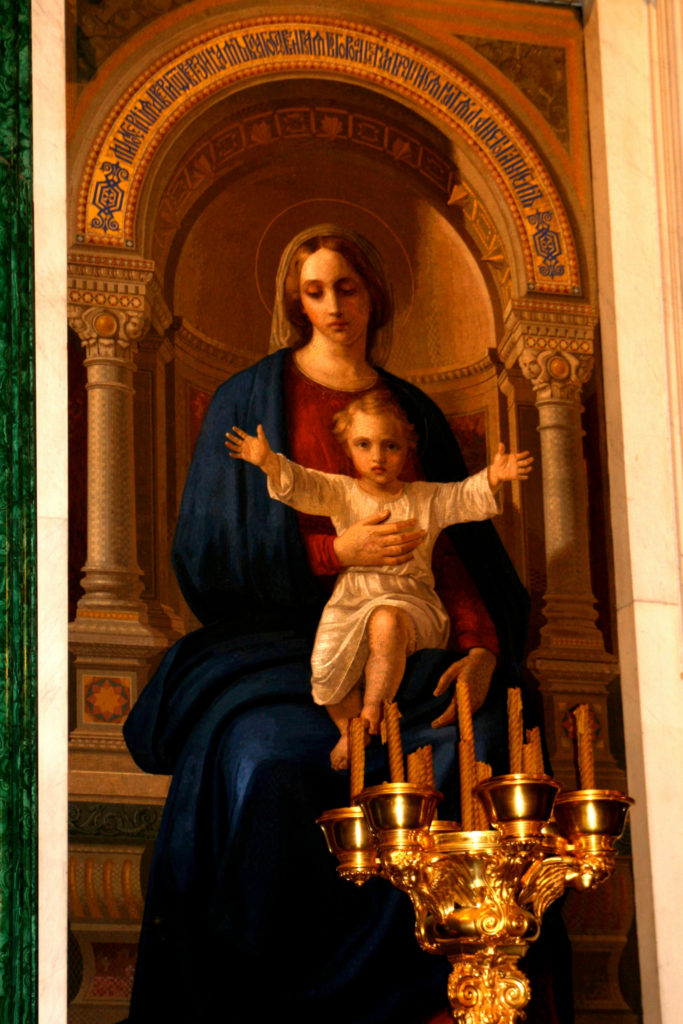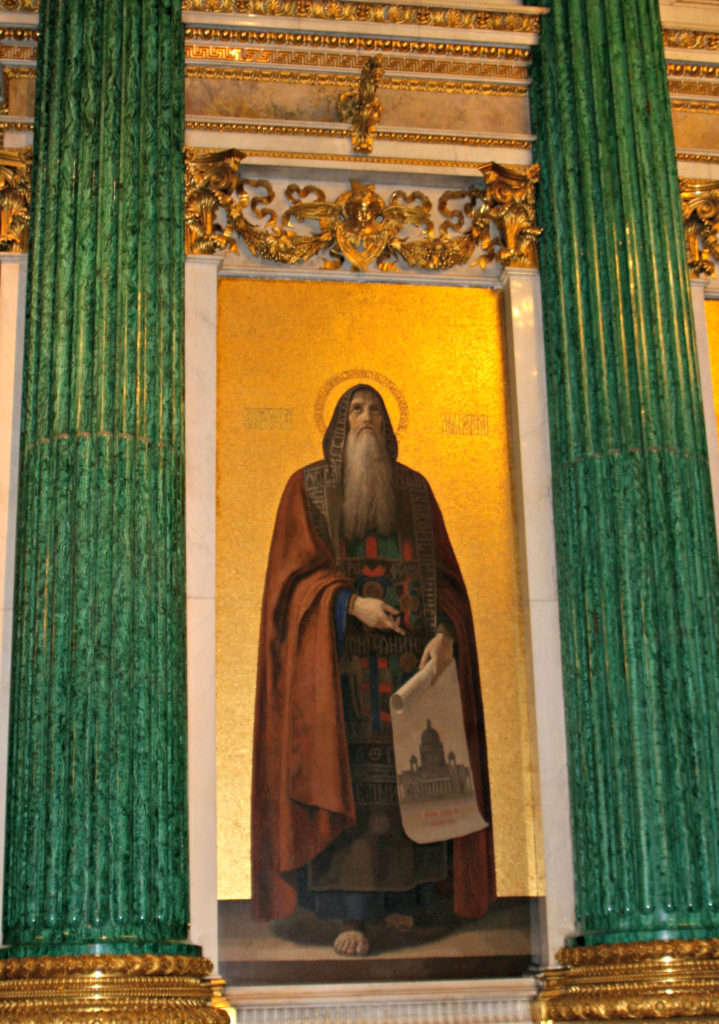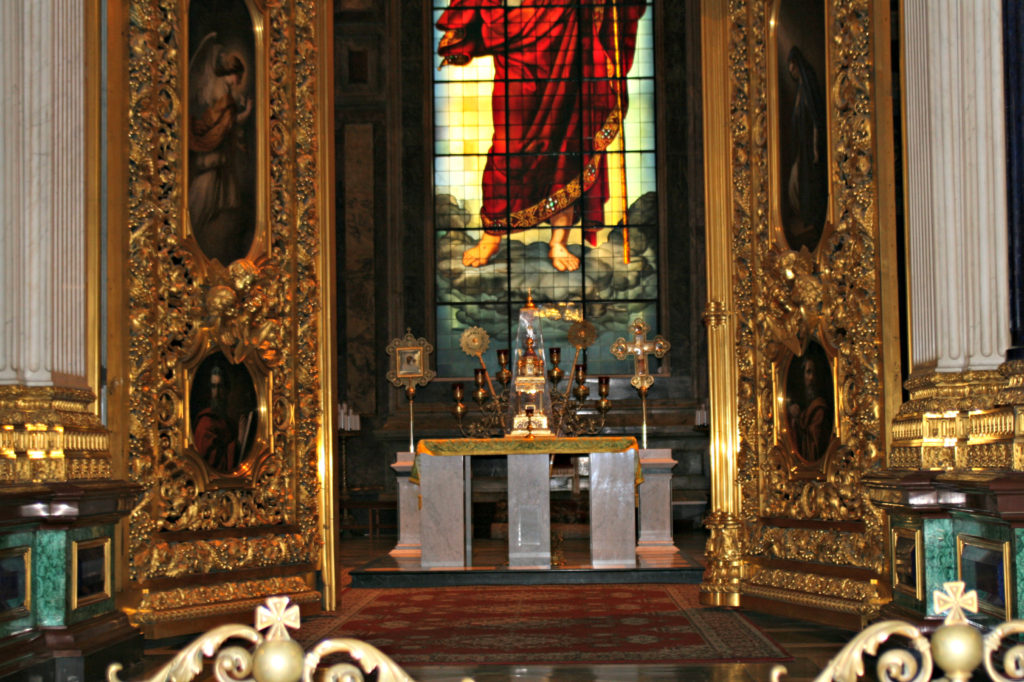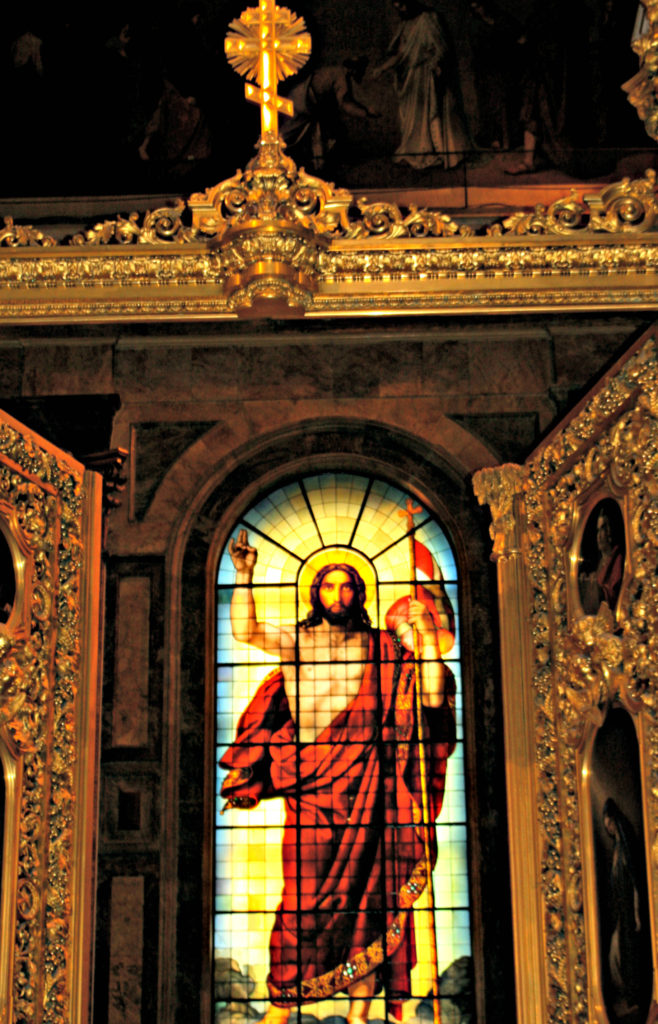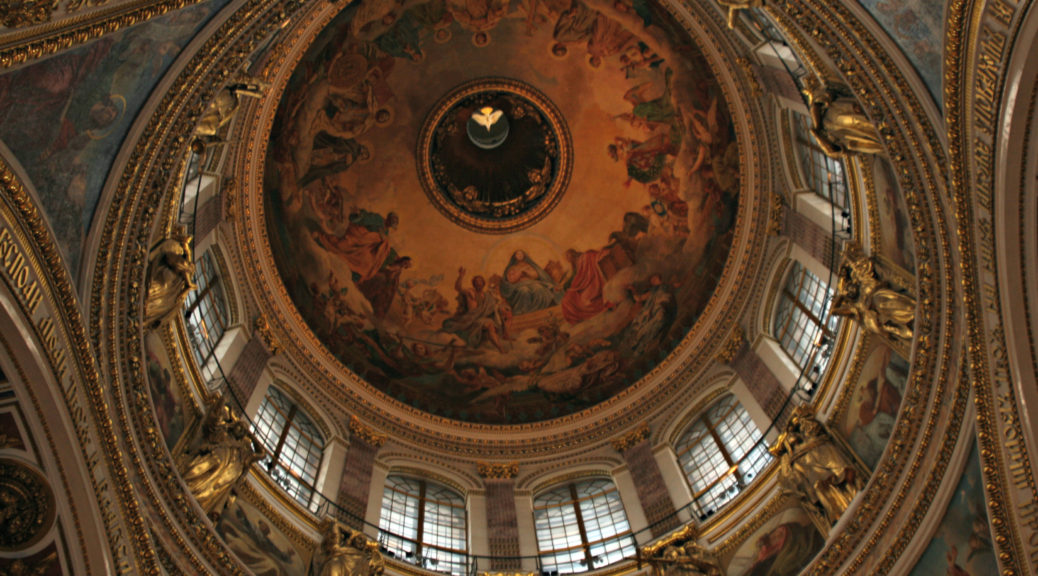
St. Issac’s Cathedral
We would visit two more churches before leaving St. Petersburg. This post will focus on St. Issac’s Cathedral which is the second largest Orthodox church in the world. It can accommodate 14,000 standing worshipers. Members of the Russian Orthodox Church believe that Jesus is present in the church so do not sit out of respect for Him. The first St. Isaac’s was a small wooden church ordered by Peter the Great. The church was dedicated to his patron saint, Issac of Dalmatia, and was completed in 1706. Peter the Great married Catherine I in the church a few years after in opened.
The original wooden church was replaced by other structures – the cathedral we see today was the result of competitive bids ordered by Alexander I, Catherine’s grandson. It took forty years to construct the cathedral, and was finally completed in 1858. The architect who won the competition, Auguste de Montferrand, was a Frenchman and came to St. Petersburg at the age of thirty. He died forty years later, just weeks after St. Issac’s Cathedral was consecrated, having devoted much of his adult life to the creation of the cathedral.
The area where St. Isaac’s Cathedral was built was marshy so over 10,000 pinewood piles were driven almost twenty feet into the ground to get to deeper, more compact soil. This provided the structure with a firmer foundation. This was a technique that had been used in the construction of buildings in Venice. So many pine trees were cut down that one source reported that “whole forests were decimated” for the piles.
The dome of St. Isaac’s, which is 333 feet tall, is an iconic part of the St. Petersburg skyline. It is plated with 220 pounds of pure gold. This was applied to the cast iron structure using a spraying process that unfortunately resulted in the death of sixty craftsmen. The domes of both the U.S. Capitol and the Lutheran Cathedral in Helsinki were modeled after the dome at St. Isaac’s. During World War II, the dome was painted gray so it would be less obvious to enemy aircraft. Tourists can climb nearly 300 steps to an area just below the dome for beautiful views of the city.
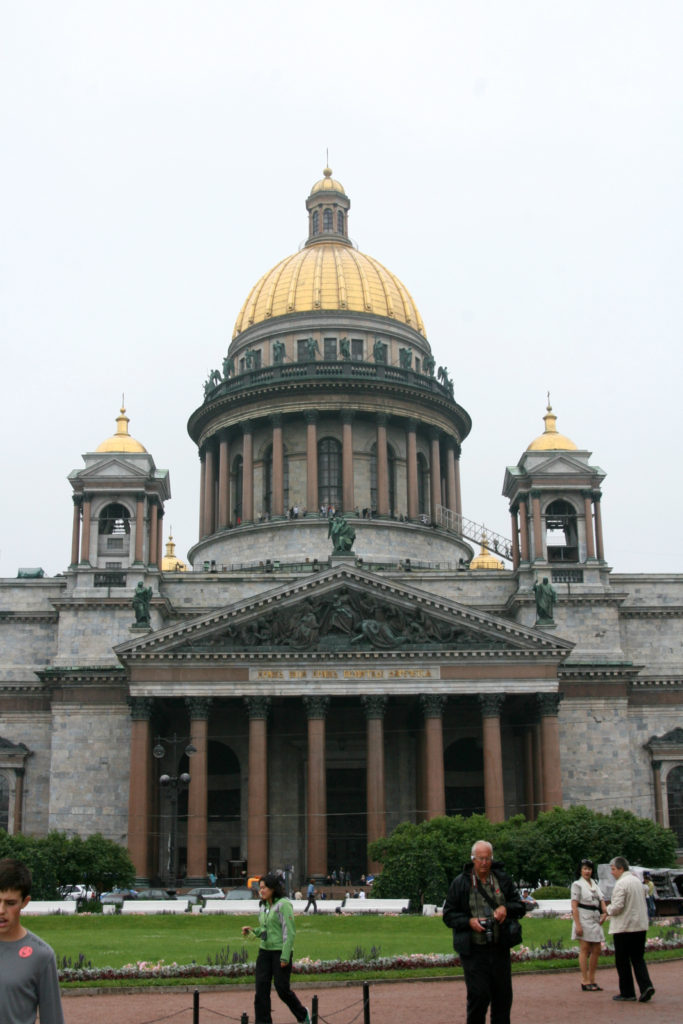
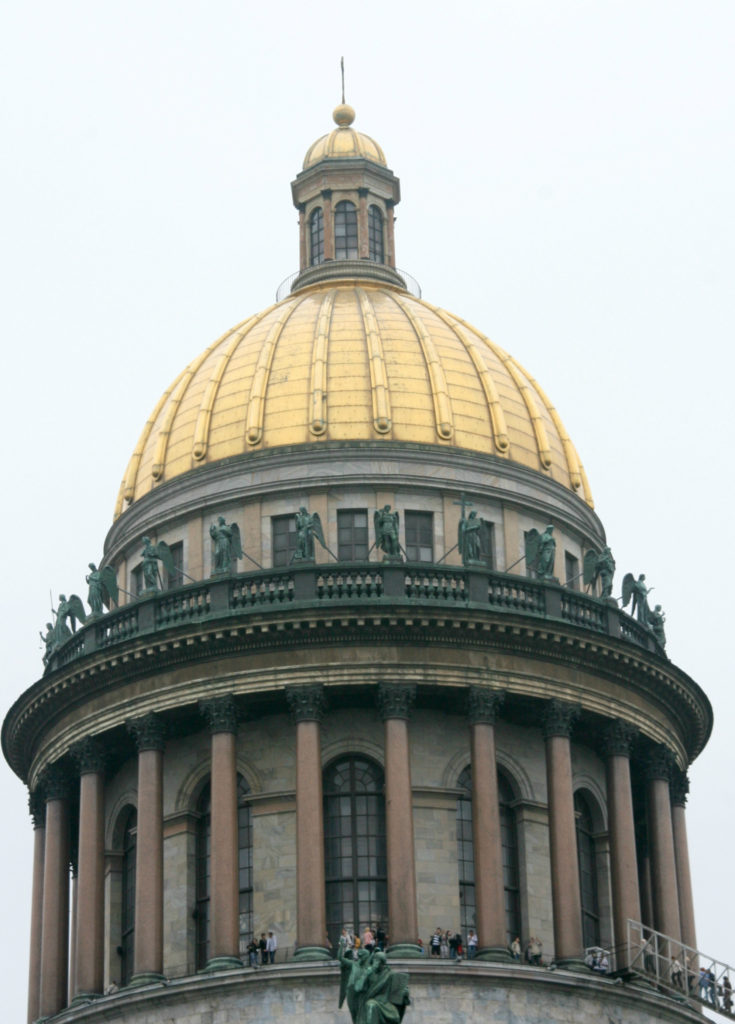
In addition to the cathedral’s main dome, there are also four smaller ones atop towers. These hold the church bells, the largest weighing three tons. The exterior of the cathedral is made with gray and pink stone. It has 112 columns with Corinthian capitals. The capital is between the column and the part of the building it supports. Corinthian refers to one of three types of Greek capitals – the Corinthian being the most ornate, decorated with leaves and scrolls. Each of the columns was cut from a single piece of red granite. There are 24 statues on the roof and 24 on the top of the rotunda. Some of those statues are in the second picture.
The next picture is of the pediment on the southern portico. It is entitled “The Adoration of the Magi.” Mary sits on a throne with the baby Jesus. The words below are translated “My house shall be called a house of prayer.” In the last picture in this section, there is a statue of the Apostle Matthew with an angel. It sits above the pediment.
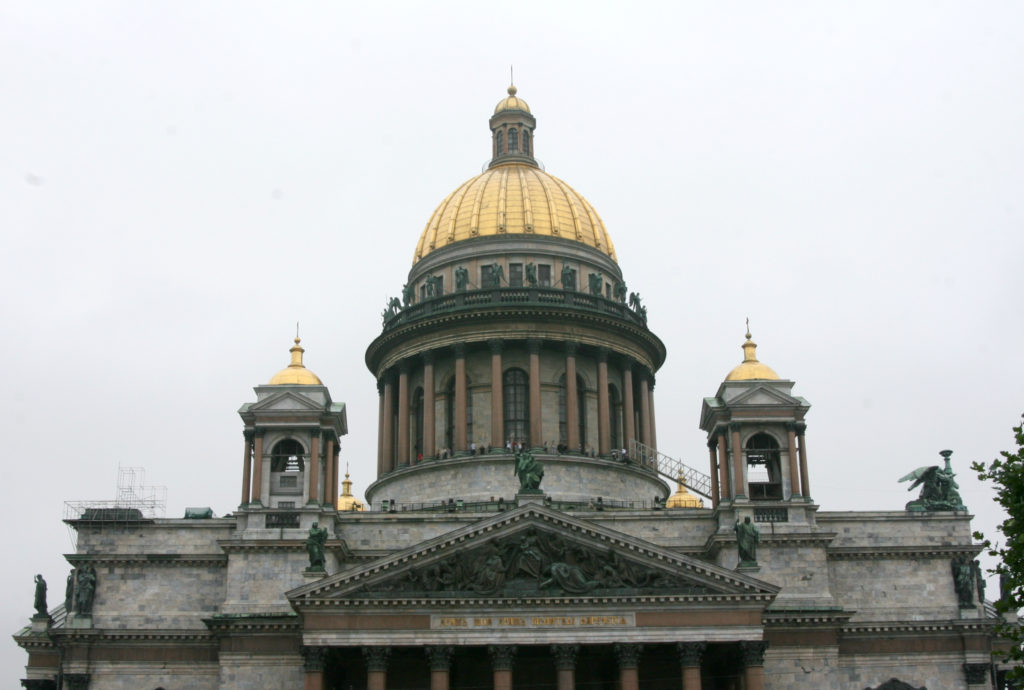
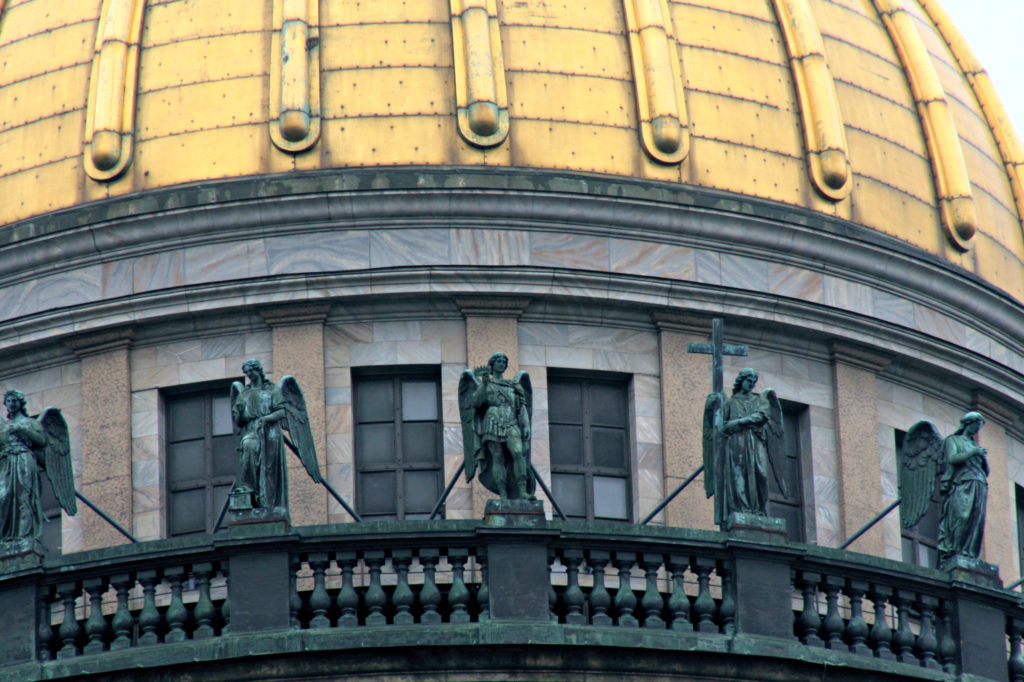
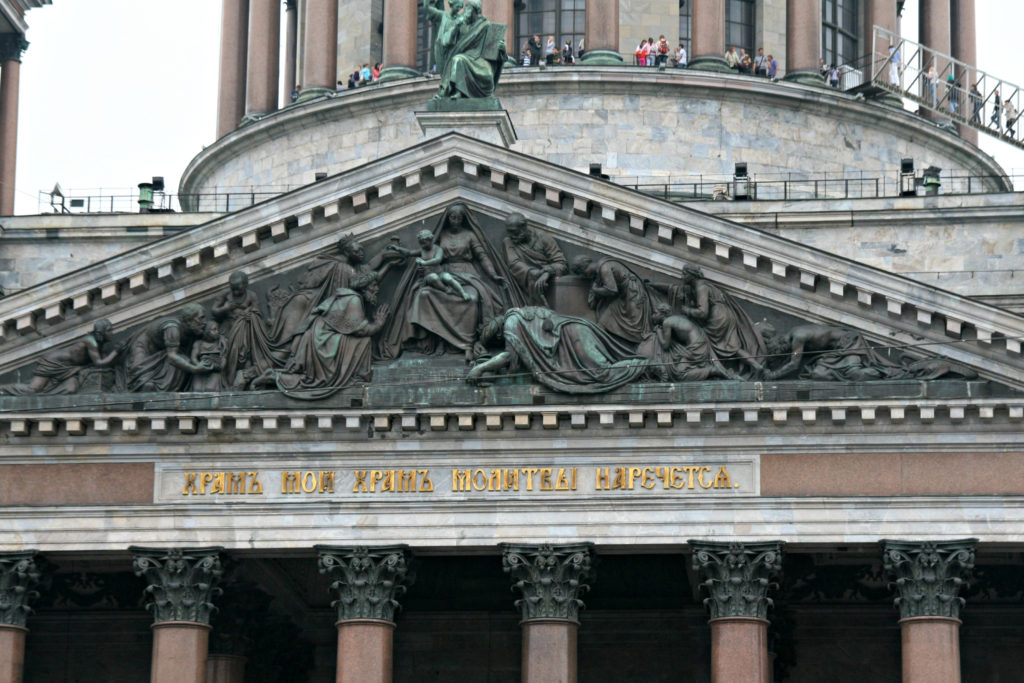
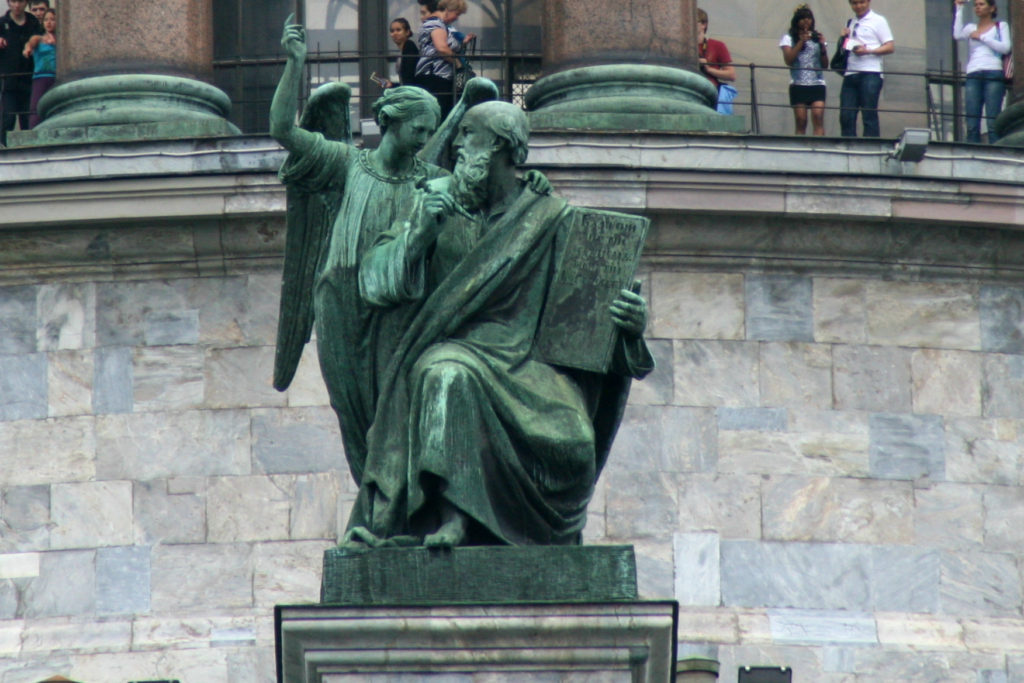
The church was closed in the 1930s under Soviet rule and many of the religious icons removed. It became the Museum of the History of Religion and Atheism. The dove in the center of the dome was removed and replaced with Foucault’s Pendulum, which demonstrates the rotation of the earth. With the fall of communism, the museum again became a cathedral. The pendulum has been removed, and the dove is back in place. Regular services are conducted at one of the smaller altars; the main altar is only used for services on major religious occasions. The interior of the church is beautiful, decorated with paintings, mosaics and stone columns. Many of the original paintings were damaged by the humidity and so were replaced by 600 square meters of mosaics, sometimes referred to as “eternal paintings.” I found these comments about the cathedral’s mosaics:
Most of the icons are mosaics. But you will not be able to tell they are! They look like original paintings after which they were made. And it took two masters one year to create only one square meter of a mosaic! This work is really elaborate and time-consuming. But the result is worth it!
http://stpetersburg-guide.com/history/isaak.shtml
The interior of the church is comprised of almost 900 pounds of gold, 1,000 tons of bronze and 16 tons of malachite. The cathedral is sometimes referred to as “the museum of natural stone” because so many different kinds of stone were used. In addition to the malachite, there are many different kinds of marble on the interior which come from around the world.
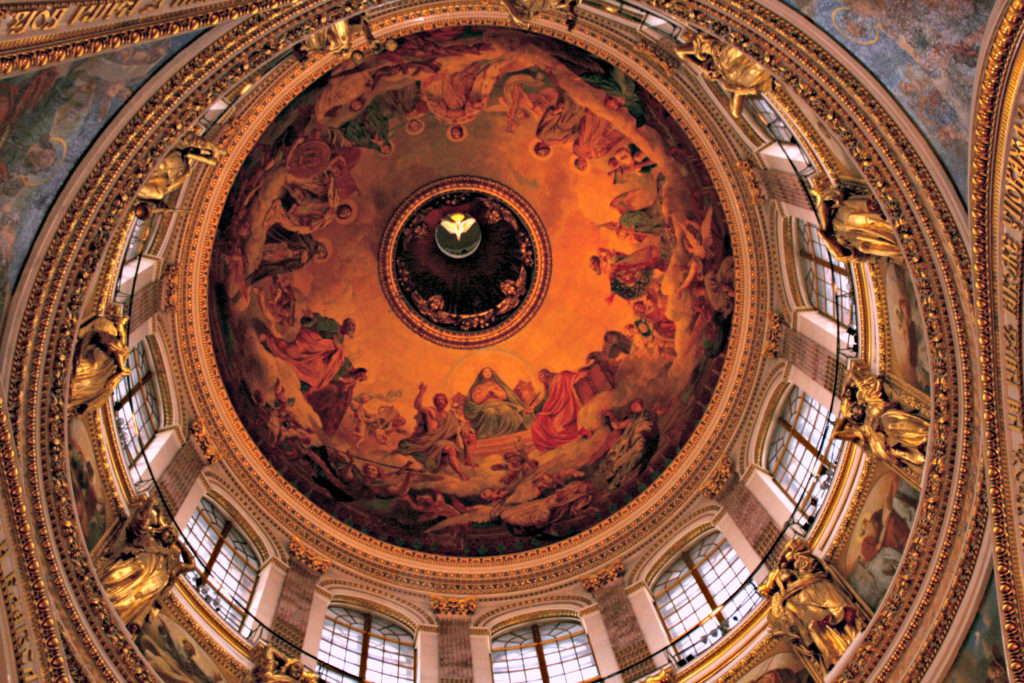
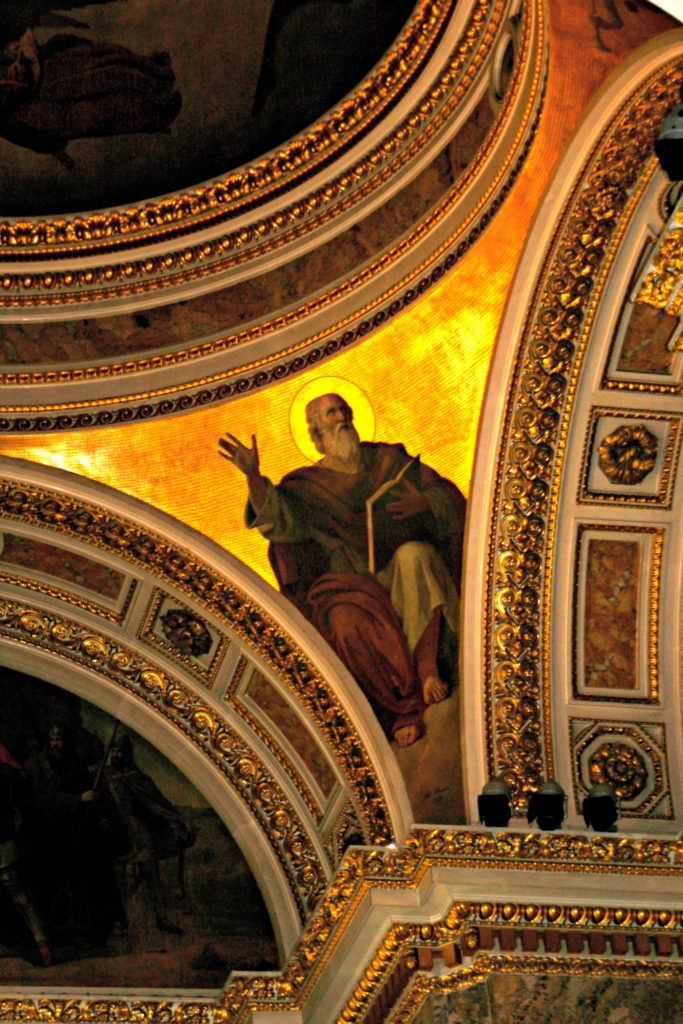
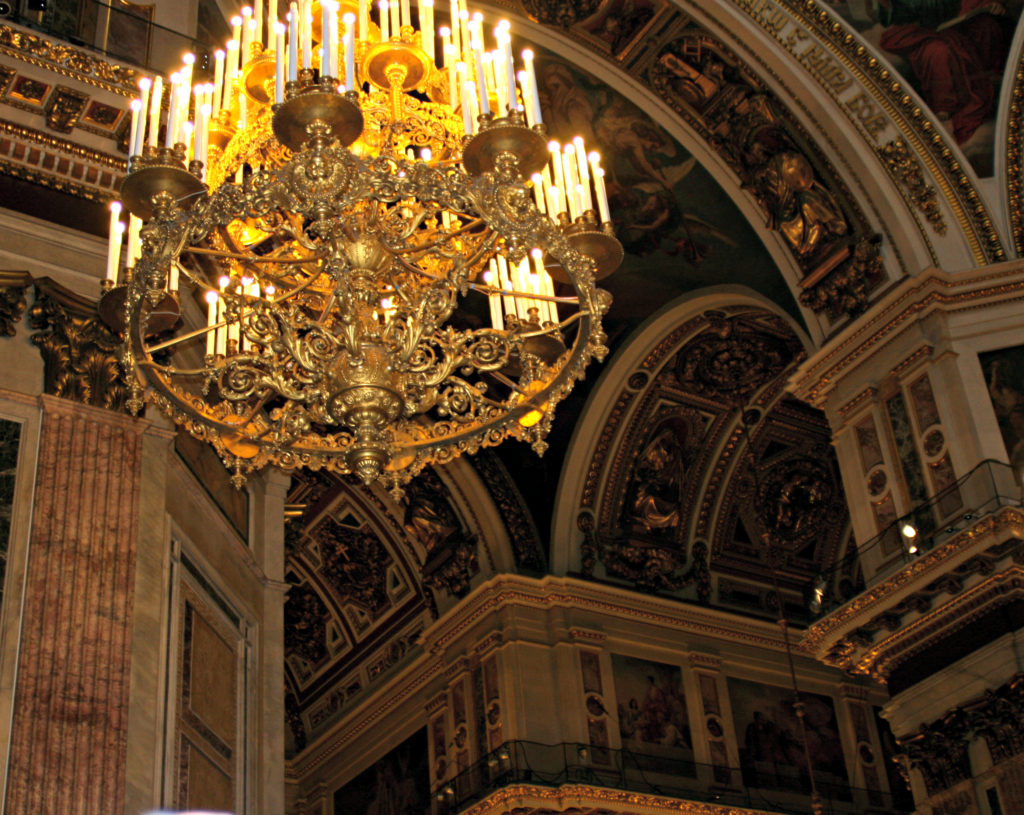
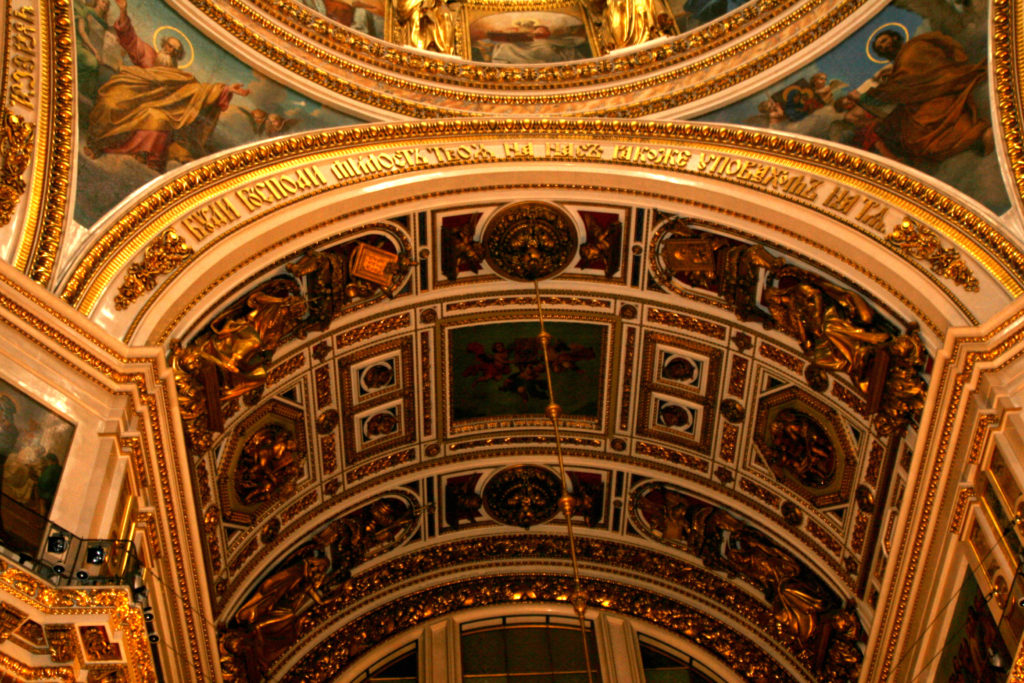
The interior of the main dome features a fresco painted by Karl Bryullov who was the president of the Academy of Fine Arts in Russia. The fresco is entitled “The Mother of God in Glory” and has Mary at its center – she is surrounded by apostles. The dove at the very center of the dome is actually suspended and represents the Holy Spirit. It has a wingspan of six feet. The dome is also decorated with twelve statues of angels. Paintings of the apostles are between these statues.
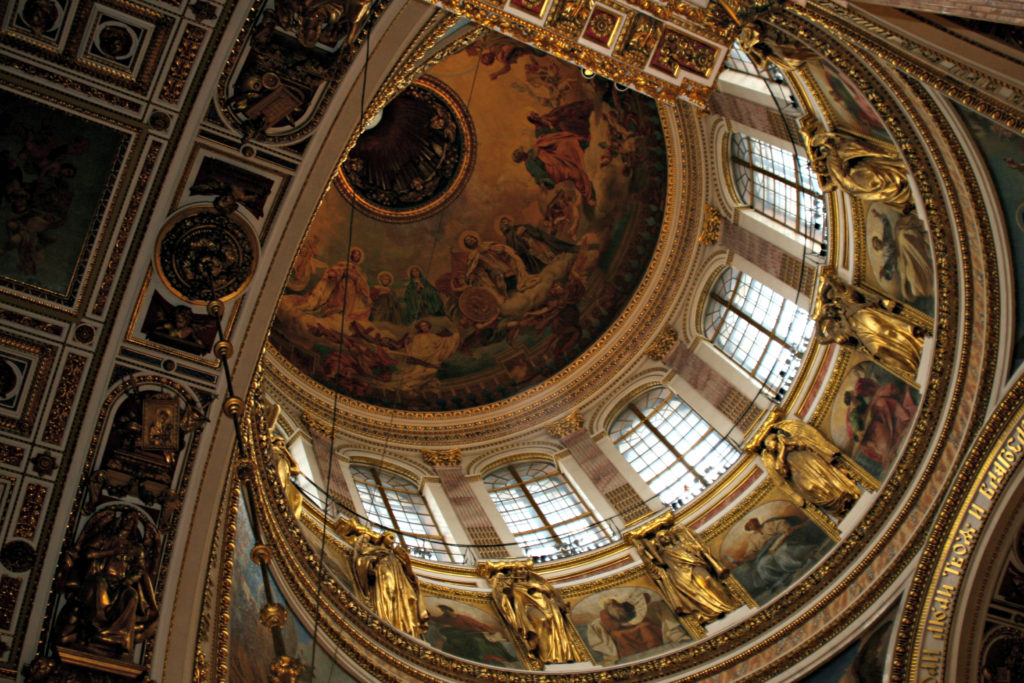

The cathedral has three altars, the main one dedicated to St. Isaac of Dalmatia, the patron saint of Peter the Great, and the other two to St. Catherine and St. Alexander Nevsky. In the first picture below, you will see the iconostasis of the chapel dedicated to St. Catherine. The iconostasis or icon screen, holds religious icons and separates the nave from the altar. The sculpture at the top of the iconostasis is entitled “The Resurrection” and is made of gilded copper.
The remaining pictures in this section are of the iconostasis of the main altar. The second picture from Shutterstock will give you a sense of the magnitude and beauty of this part of the cathedral. There are green malachite columns bordering many of the icons. You will also see two blue columns which are made of lapis lazuli. These border the holy doors which are used only by the bishop or priest. The lower tiers are mosaics. There are gilded bronze doors behind which is a stained glass window of the “Resurrected Christ.” Above this window atop the arch is a gilded sculpture entitled “Christ in Majesty.” Above this is a mosaic of the Last Supper.
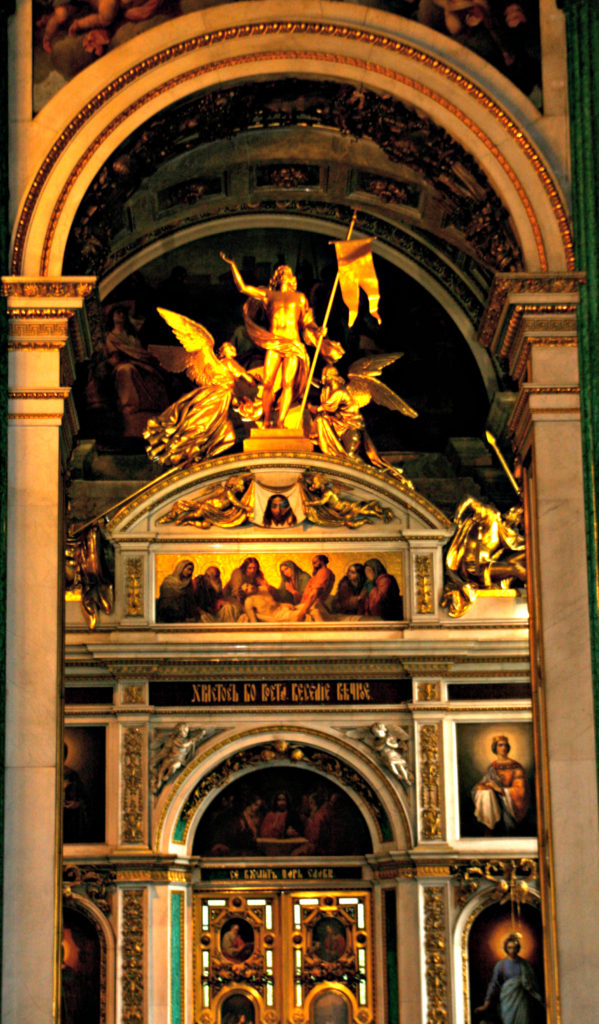
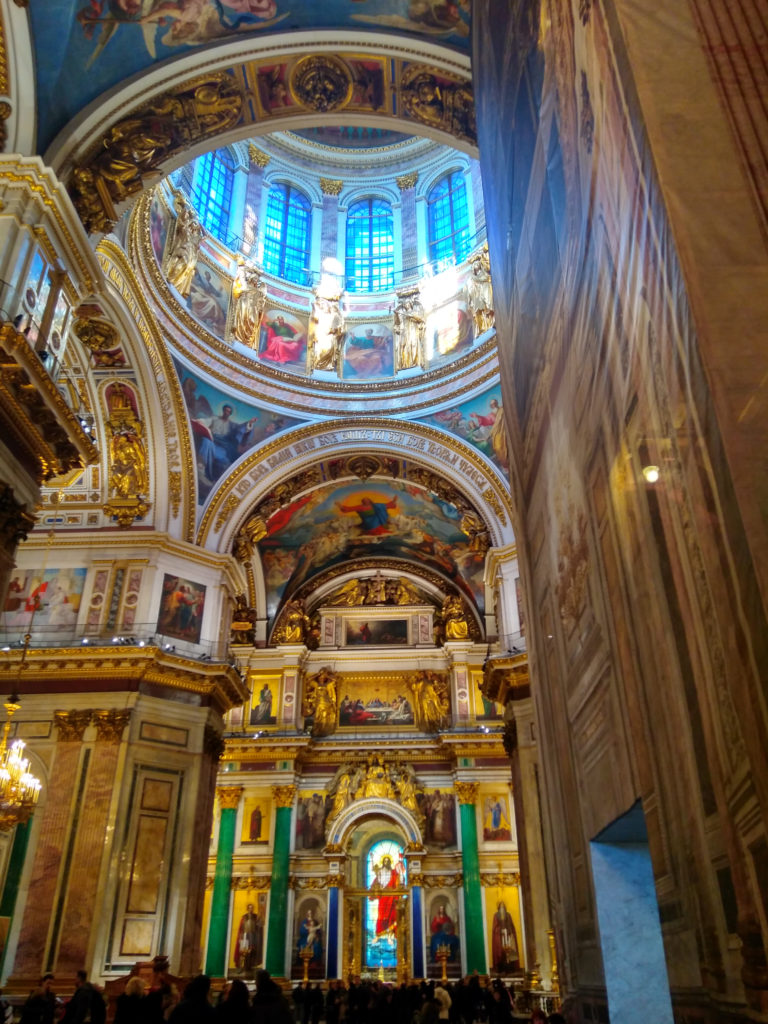

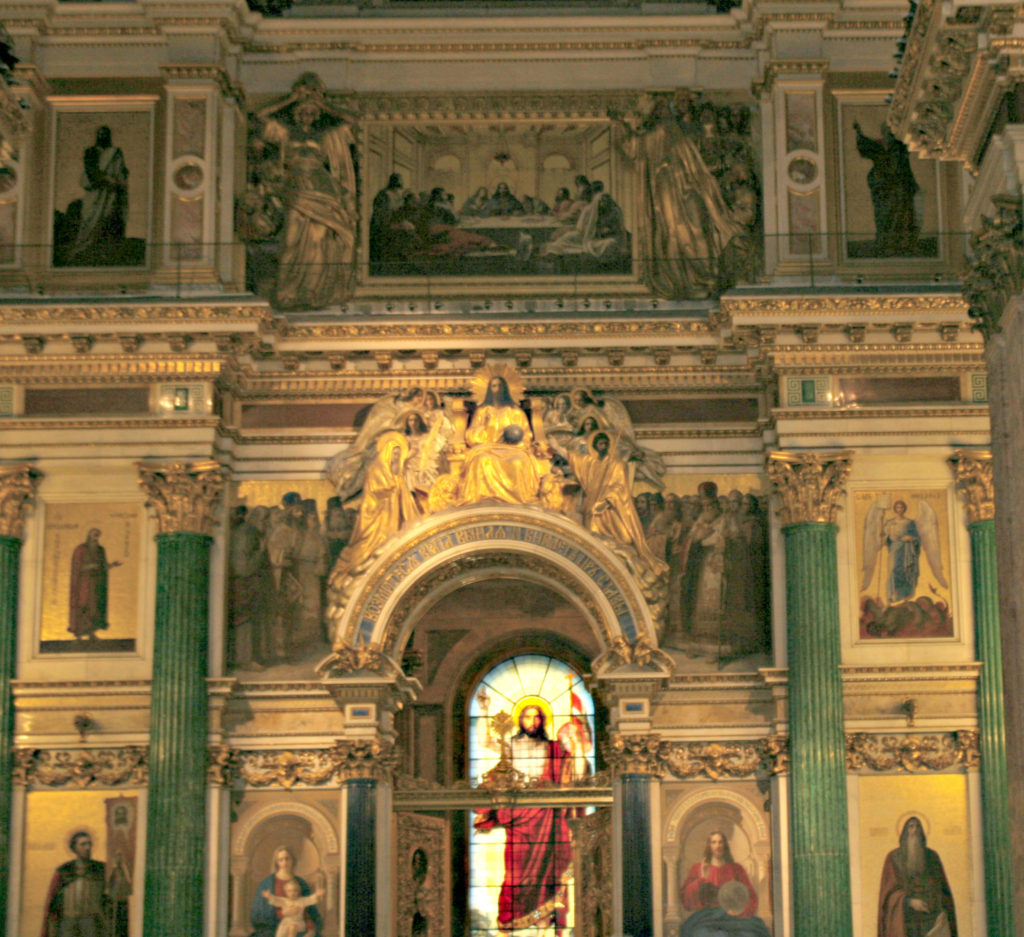
These are also pictures of the iconostasis and will show some parts in more detail. Immediately to the left of the holy doors is a mosaic of Mary with the baby Jesus. Between the two malachite columns to the right is St. Isaac. He is holding the plans for the cathedral. In the third picture, you will see the holy doors, the altar, and part of the stained glass window. The doors are gilded in bronze and weigh three tons. This picture also provides perspective as to the size of the stained glass window. The final picture is of the stained glass window, the “Resurrected Christ.” Stained glass windows are unusual in orthodox churches, but this one certainly has a prominent place in the cathedral. It was commissioned in Munich which was well-known for its stained glass compositions. It is just over 300 square feet in area.
There is also a sad history associated with the cathedral. St. Isaac’s Cathedral was expensive in dollars but even more so in human life. In terms of dollars, it cost approximately $350,000 which doesn’t seem like an extraordinary amount today, but was over six times the cost of the Winter Palace. In addition to the individuals I mentioned earlier who died as a result of the spraying process used to apply gold to the exterior of the dome, hundreds more lost their lives extracting marble from quarries and transporting it to St. Petersburg. Others lost their lives falling from scaffolding during the construction of the cathedral. While this is an example of the class divisions between the wealthy and serfs, St. Isaac’s was open to everyone as a place of worship.
Today it serves primarily as a museum but has also held worship services since the early 1990s. It is a beautiful cathedral and if you are in St. Petersburg, St. Isaac’s is certainly a place you will want to visit.
